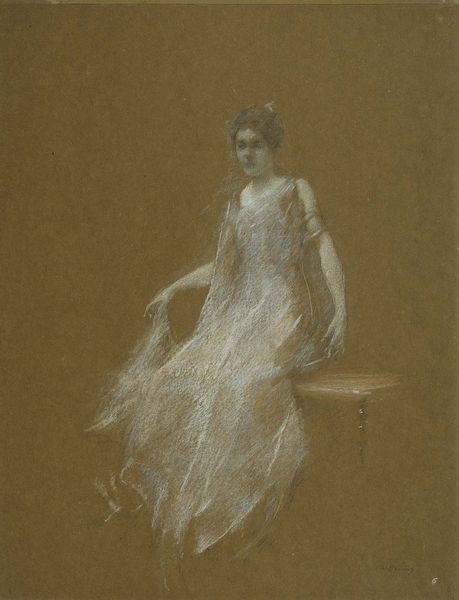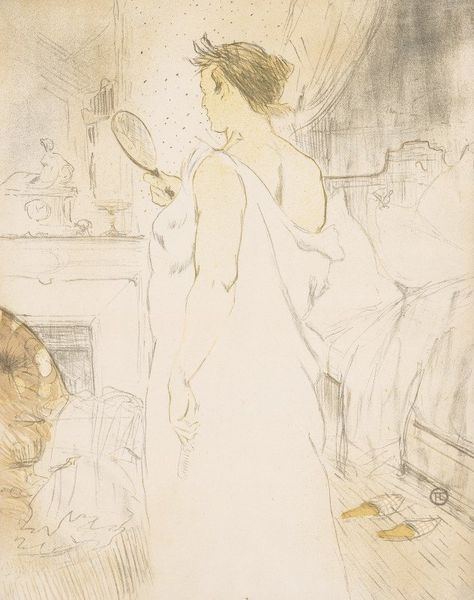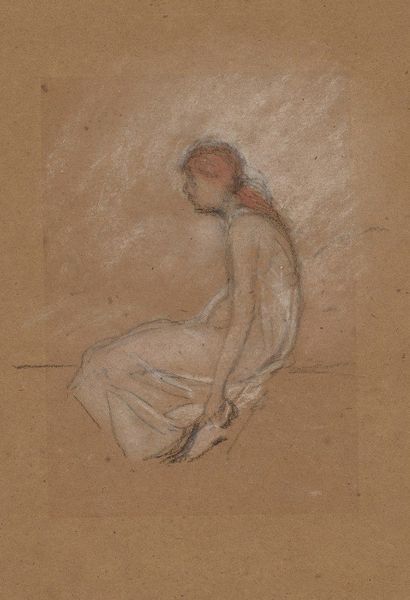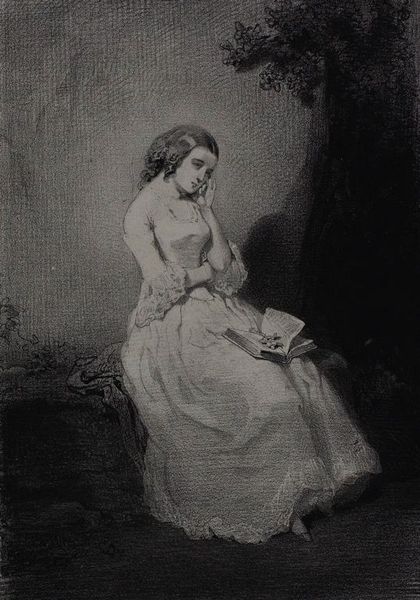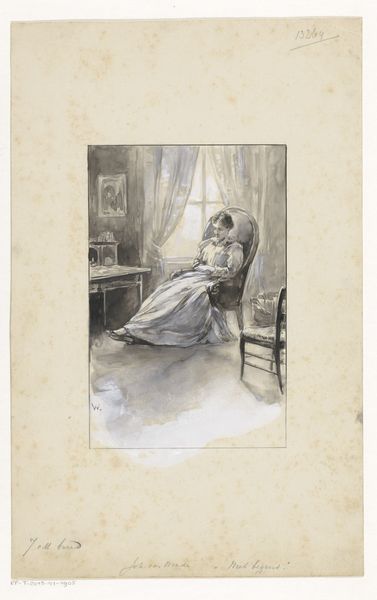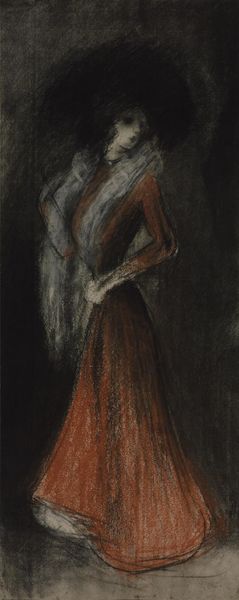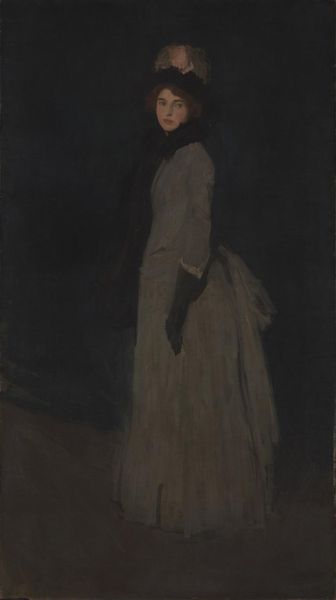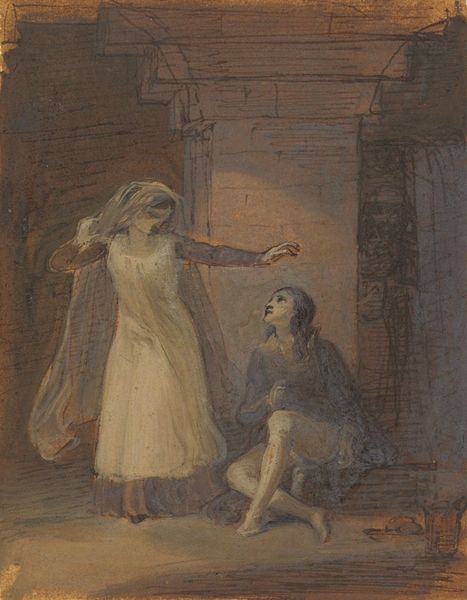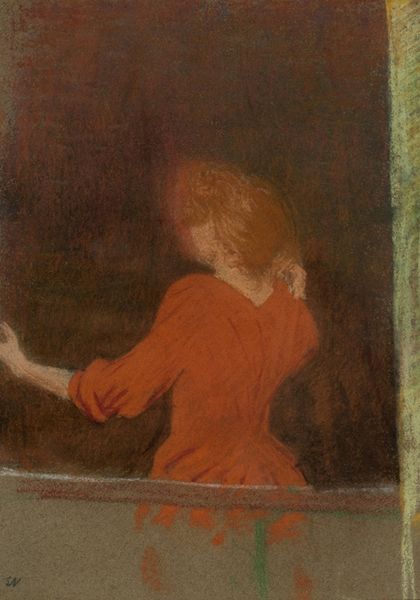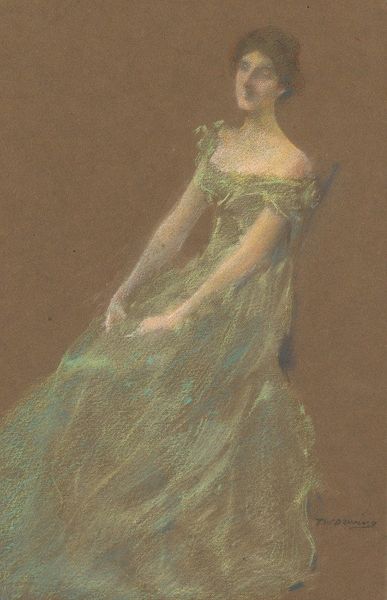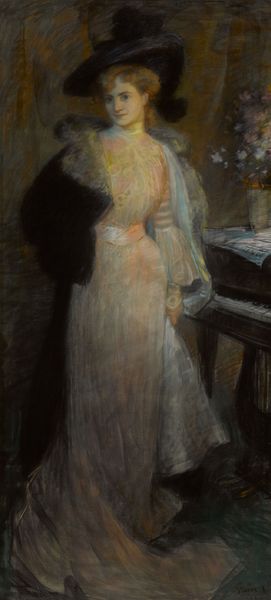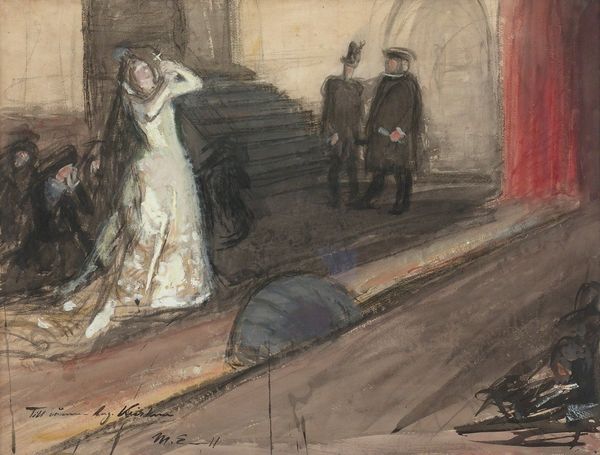
drawing, watercolor
#
portrait
#
drawing
#
narrative-art
#
oil painting
#
watercolor
#
romanticism
#
watercolour illustration
#
history-painting
#
watercolor
Copyright: Public Domain: Artvee
Editor: So, this is "Juliet About to Take her Sleeping Draught," a watercolor drawing by Robert Smirke from 1825. It feels incredibly intimate, almost theatrical with the draped bed. What can you tell me about this piece? Curator: What interests me is not just the emotional narrative, but the physical act of its creation. The watercolor itself – what kind was it, how was it sourced, who ground the pigments? Smirke wasn't just illustrating Shakespeare; he was engaging in a very specific material process. Think about the paper – its weave, its production. This drawing embodies a specific moment in the industrial revolution, impacting both art and consumption. Editor: I hadn't thought about the materials in that way, but you are right. How would his audience receive this image given their own understanding of artmaking in 1825? Curator: Precisely! And where would they have seen it? As a standalone artwork? As part of a printed book? That context changes everything. It speaks to the changing nature of art consumption, away from purely aristocratic patronage to a burgeoning middle-class market. How accessible were watercolors as a medium, compared to oil painting? That choice isn't arbitrary; it reflects economic and social factors at play. Editor: It’s fascinating to think about the production of art as connected to larger social and economic shifts. How does considering these materials and processes affect our understanding of Juliet's emotional state? Curator: The materiality underscores the *artificiality* of the scene. Juliet’s drama isn’t a purely individual experience. The watercolor presents the means of representation – production – as staged and mediated by Smirke, as is, also, Juliet’s impending performance. Both invite scrutiny! Editor: So, by examining the materials, we move beyond the romantic interpretation and see the artwork as part of a larger network of production and consumption. I will keep that in mind! Curator: Indeed! Thinking this way helps us unpack layers of meaning often overlooked.
Comments
No comments
Be the first to comment and join the conversation on the ultimate creative platform.
